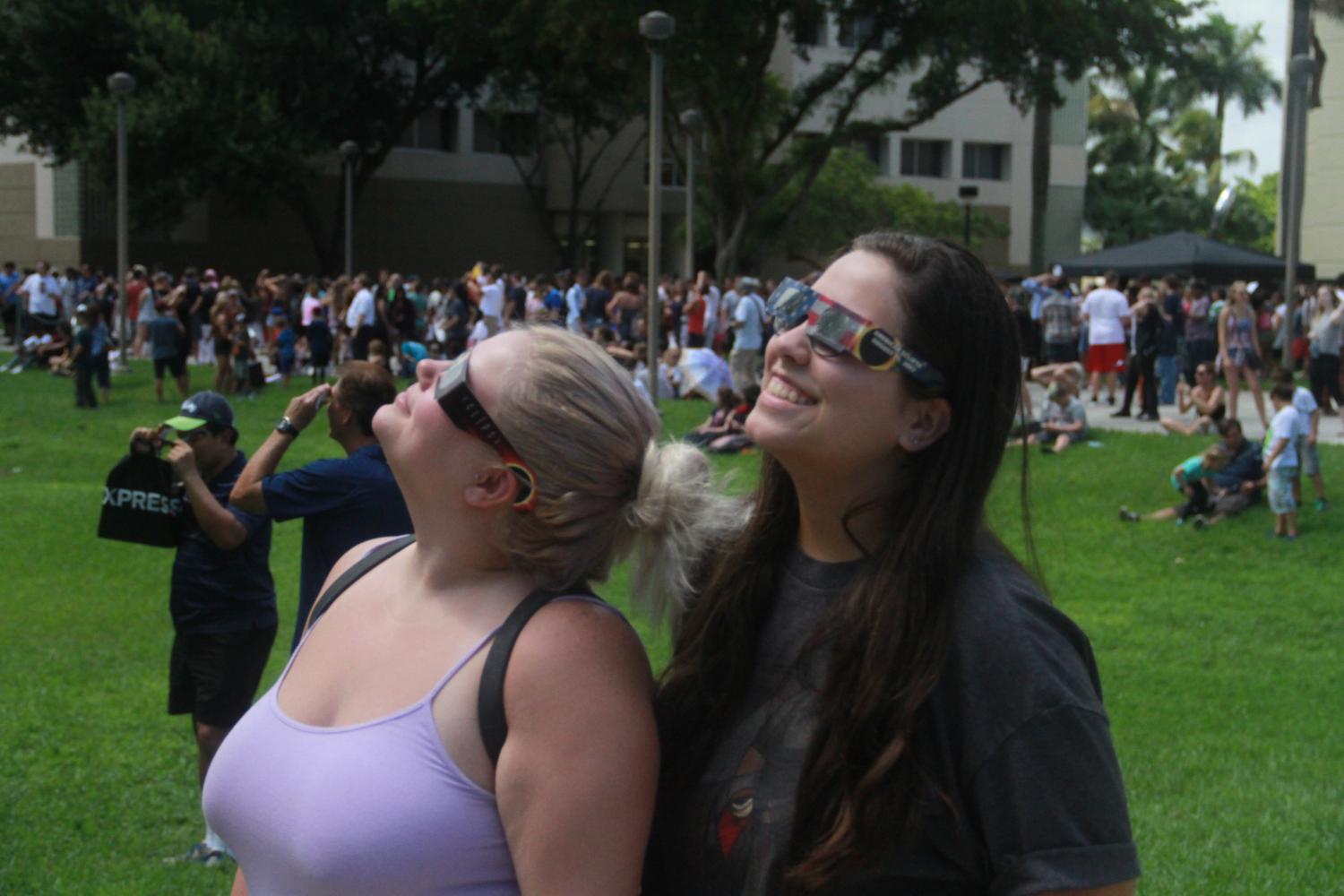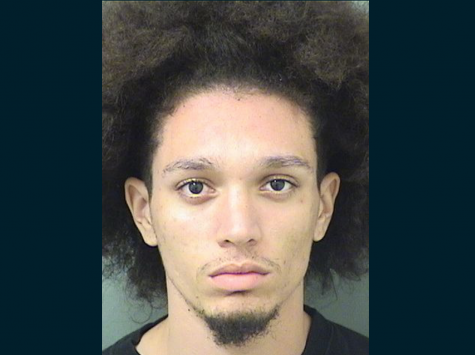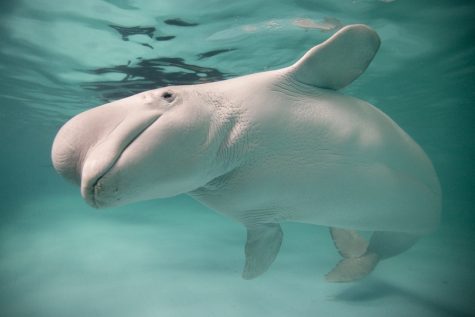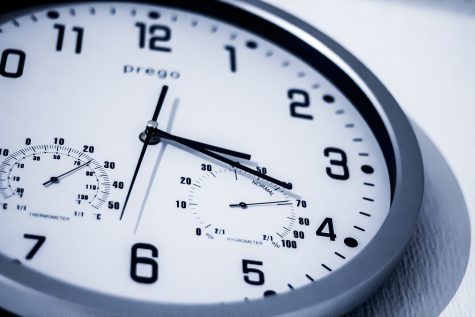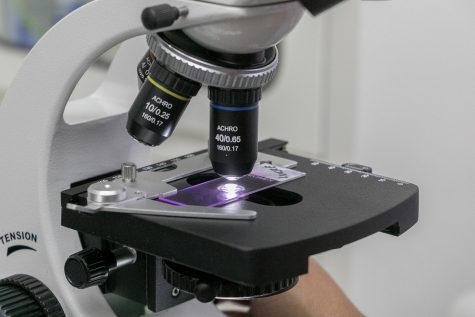FAU community gathers to view solar eclipse
The College of Science hosted the event on the Boca campus.
Junior communications major Cassandra Penrod (left) and junior elementary education major Leyla Massaro take a look at the solar eclipse with their eclipse glasses. Photo by Joe Pye | Editor in Chief
August 21, 2017
Why were tens of hundreds of people waiting in the August heat on the Boca campus? Free stuff.
Pairs of protective glasses were handed out by the College of Science for its total solar eclipse viewing event Monday afternoon. The glasses were given out on a first come, first serve basis to the first 1,000 people.
The first visible solar eclipse since 1979 brought students, faculty, and residents to the lawn between the Science Building and the Biomedical Science Center. The eclipse was visible from 1-4 p.m.
The line for the glasses stretched around the Science Building to the Breezeway entrance near the Rec Center. And while the college ran out of glasses by 1:45 p.m., groups ended up sharing for the rest of the day.
A total solar eclipse occurs when the moon moves fully in front of the sun. This is the first solar eclipse to cross the U.S. coast to coast in 99 years. Even though a full solar eclipse is a rare sighting, you shouldn’t stare directly at it without protective eclipse glasses.
FAU astronomy and physics lab coordinator Eric Vandernoot created a video on the subject.
“It has been a long time coming! Millions of people in the U.S. will finally be treated to an event that for many of them, has never occurred in their lives at all,” Vandernoot wrote via email. “We are not in the path of totality as it crosses the country. We will see only 80% of the Sun covered, but there is still many interesting things to see even then.”
He was present at the event with a telescope that allowed students to view the eclipse.
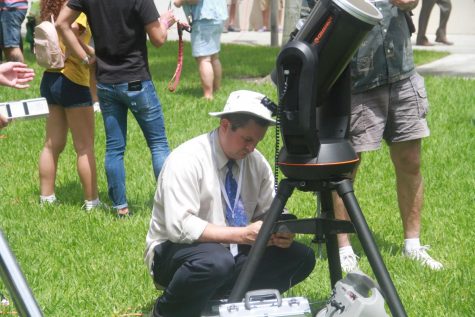
Some students took time in between early classes to ensure they got their glasses before the crowds showed.
“I saw the event on Facebook, and I thought, ‘I got to go to that.’ I read in the newspapers that they were handing out glasses here at school. I saw that they’ve been sold for $20.00,” freshman multimedia journalism major Karla Recio said. “I looked it up and was excited they were doing this here. I called my friends, they said it was pretty cool so we got here early to get our glasses.”
Recio’s friend, freshman environmental science major Veronica Teek, grew up watching eclipses with her father, who worked at the Kennedy Space Center in Merritt Island, Florida.
“I used to watch eclipses with my dad,” Teek said. “The last partial eclipse I saw was about 12 years ago. My dad and I used to go out with our telescope to Lake Ella in Tallahassee.”
Around 2:30 p.m., the eclipse had the appearance of an orange shaped crescent moon.
“This was my first time seeing something like this,” junior communications major Cassandra Penrod said. “I didn’t expect it to be so cool.”
Check out our gallery from the event here.
Benjamin Paley is the news editor of the University Press. For information regarding this or other stories, email [email protected].
Joe Pye is the editor in chief of the University Press. For information regarding this or other stories, email [email protected] or tweet him @jpeg3189.

